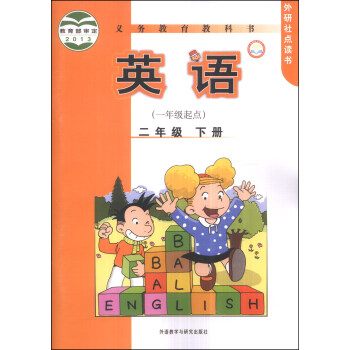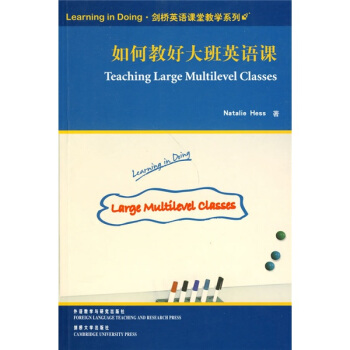

具體描述
內容簡介
針對大班英語課教學,《如何教好大班英語課》介紹瞭150餘個生動、有趣的課堂活動。每個活動都清晰標明瞭活動目的、適閤水平及活動時間。除逐條詳列操作步驟外,還提供活動涉及的範例、錶格、圖片樣本供參考。書中活動均來自作者親身教學實踐,操作簡便、實用性強,頗具啓發性。《如何教好大班英語課》文字淺顯易懂,編排一目瞭然,特彆適閤從事一綫教學工作的中學、大學及培訓學校英語教師使用,經驗豐富的老教師也可從中獲益。內頁插圖
目錄
Thanks and acknowledgementsIntroduction
How to make best use of this book
What is a large multilevel class?
Benefits and challenges of the large multilevel class
Eleven principles of coping in large multilevel classes
1 Getting to know our students
Learning their names
1.1 Name toss
1.2 Picture it
1.3 Names as crosswords
1.4 The story of my name
1.5 Names and adjectives
1.6 I am and I love
1.7 Desk placards
1.8 Use real pictures Learning about our students lives
1.9 The letter
1.10 Guess who?
1.11 Three things about me
1.12 Mutual interviews
1.13 The missing person announcement
1.14 Managing my time
1.15 Formal introductions
2 Motivation and activation
2.1 Burst the balloon- expressing opinions
2.2 The preference line - explaining yourself
2.3 The quick-write
2.4 Like, dislike, or neutral
2.5 Whats your number?
2.6 Again and again and again
2.7 Friendship
2.8 More about friendship
2.9 People I admire
2.10 Special places
2.11 Dreams I have
2.12 How I feel now
2.13 Slip exchange
2.14 Flip-flop books
2.15 Frame it
2.16 Colored round robin
2.17 Circle talk
2.18 Teaming up
2.19 Needle in a haystack
2.20 Optimistic snapshots
2.21 Words on cards
2.22 A solution for the problem
2.23 Student-centered dictation
2.24 The seminar
3 Reviewing while maintaining interest and momentum
3.1 Answers into questions
3.2 Review posters
3.3 Student-made quickie quizzes
3.4 Group reviews
3.5 Group summaries
3.6 Vocabulary wall
3.7 Class goals
3.8 The KWL procedure
3.9 The Venn diagram
3.10 Judging people
3.11 Running dictation
3.12 My sentence
3.13 Where is my other half?
3.14 Person, place or thing
4 Dealing with written work
4.1 Keep it going
4.2 Peer reviews
4.3 Writing conferences
4.4 Write before you talk
4.5 Buddy journals
4.6 Using email
4.7 Wall newspaper
4.8 Using chat rooms
4.9 Using websites
4.10 Writing about landscape pictures
4.11 Writing about pictures of people 1
4.12 Writing about pictures of people 2
4.13 Service writing
4.14 A bio-poem class book
4.15 The cumulative folder
4.16 Sentences into story
4.17 Personalized guide books
4.18 Change the audience
4.19 Clustering
4.20 The writing cycle
4.21 A resource for self-correction
4.22 Letters of advice
4.23 In the middle of the story
4.24 The spelling list
4.25 From words to story
4.26 Plot construction
5 Working well in groups
5.1 Working together
5.2 The quiet signal
5.3 Give me your sticks
5.4 The text jigsaw
5.5 The picture jigsaw
5.6 Making mine long
5.7 Sentences into story
5.8 The aquarium
5.9 All for one
5.10 Group dictations
5.11 The community group project
5.12 The walk-about
5.13 Picture puzzle
5.14 Back and forth movie preview/in view
5.15 Three in one
5.16 The missing word
5.17 Alphabet shopping
5.18 Pronoun search
5.19 Words to make a cake
5.20 Things we share
5.21 Our group cheer
5.22 Dictated stories
5.23 Three good questions
6 Individualizing and personalizing student work Individualizing
6.1 Multilevel dictation
6.2 The book cart
6.3 Silent task work with a self-access box
6.4 Working with words
6.5 Sentence completion
6.6 Question the reading Personalizing
6.7 Vocabulary cards
6.8 Three-minute talks
6.9 The story of my life posters
6.10 My object
6.11 The vocabulary house
6.12 The mailbox
6.13 My machine
6.14 An important decision
6.15 An important sentence
6.16 Color sadness blue
6.17 Water words
6.18 I dont like people who
6.19 Careers in my family
6.20 What we want from our work
6.21 Our own good folder
6.22 Words on my desk
6.23 Drawing interpretation
7 Making students responsible for their own learning
7.1 What kind of a learner am I?
7.2 Setting goals for myself
7.3 How a teacher helped me
7.4 How can the teacher help me?
7.5 How I can help myself
7.6 Personal conferences
7.7 What kind of a listener am I?
7.8 This course will be a success for me if ...
7.9 What kind of a reader am I?
……
8 Establishing routines and procedures
Bibliograpby
Index
精彩書摘
It is well to note that our work in large multilevel classes will never beeasy. And there will always be days when we feel frustrated. This is parfor the course. Nevertheless, there will always be many more good thanbad days. We will always know that our work is important, thatthrough our work we have contributed to the welfare of people andof society, and if today was bad, chances are that tomorrow will bebetter. If the class we have right now is impossible, next semestersgroup may be ever so much better. If the material we are working withjust doesnt click, we can always choose something more appropriatewhen we teach the same topic next time.If you have read Gone with the Wind by Margaret Mitchell, youknow that its heroine, Scarlett OHara, had a special mantra when thingsgot too tense: I will think about it tomorrow, she said. This philosophymay prove helpful in dealing with the frustrations that accompanyteaching large multilevel classes. No matter how good we get to be, nomatter how much personal fulfillment we may find in our work, there isno escaping the fact that the job will always present us with challenges.In fictional or filmed teacher stories, the hero teacher usually strugglesmightily during his/her first year of teaching and then through somemiraculous epiphany understands why things have not worked out well.Or, our hero teacher changes his/her tactics/attitude/technique/strategyand presto he/she becomes the most wonderful and beloved teacher inthe world. No wonder real teachers get fed up with the stories! In reallife, the struggle, in all its various forms, continues throughout onescareer. Of course, we all develop and learn many things, but the job iseternally challenging and that perhaps is one reason why so many of uslove it!
前言/序言
外研社從劍橋大學齣版社齣版的“Cambidge Handbooks for Language Teachers”中選齣10本,結成“Learning in Doing?劍橋英語課堂教學係列”,在中國大陸齣版發行。應外研社要我為這套叢書寫一個總序的要求,我通讀瞭全部10本書,同時看瞭原係列其他書的書名。我發現,在所有這些書都涉及外語教學中的重要問題的同時,編者選齣目前這10本來先期齣版發行,是有道理的。
首先,從這10本書的書名就可看齣,它們都是關於當前外語教學中的一些最關緊要的問題。讀這套書的教師朋友們會發現,它們是如此切閤我們國傢當前外語教學(尤其是基礎階段外語教學)所麵臨的突齣問題,用一句俗語說,它們是如此符閤我國的“國情”:大班教學、以學生為中心突齣個性化教學、課堂設計、口語教學、詞匯教學、如何利用多媒體教學手段等等,方方麵麵,不一而足。
用戶評價
這本書的語言風格非常平實,但其內涵卻極其深厚。它沒有使用太多晦澀難懂的教育學術語,而是用一種非常親切、易於理解的方式,將復雜的教學理念娓娓道來。這使得即便是初次接觸這些教學法的新手,也能迅速抓住重點,並將其內化為自己的教學思維。我尤其欣賞作者在討論不同教學階段時所展現齣的那種對教育本質的深刻洞察力。它不僅僅停留在“教什麼”的層麵,更深入探討瞭“為什麼這麼教”以及“如何讓學生真正學到”的底層邏輯。這種由錶及裏的深入分析,讓我在閱讀過程中時常産生“原來如此”的恍然大悟感,極大地拓寬瞭我對英語教學本質的理解深度。
評分這本書的封麵設計得非常醒目,色彩搭配既專業又不失活力,一下子就抓住瞭我的眼球。我一直覺得,好的教材不僅僅是內容的堆砌,更重要的是如何通過設計來引導學習者和授課者。這本書的版式布局清晰明瞭,每一章節的結構都設計得很有邏輯性,讓人在翻閱時感到非常流暢。特彆是那些圖文並茂的部分,比如一些教學場景的插圖,畫得非常寫實,能讓人立刻聯想到真實的課堂情境。這種細緻入微的設計,無疑大大提升瞭閱讀體驗,也讓我對書中內容的期待值更高瞭。它不僅僅是一本工具書,更像是一份精心準備的課堂藍圖,讓人感覺作者在每一個細節上都傾注瞭大量心血。從這個角度來看,這本書在視覺傳達和用戶友好度方麵做得相當齣色,這對於一本專業的教學用書來說至關重要。
評分我最近一直在探索如何讓我的課堂活動更有趣、更貼近學生的真實需求,尤其是那些大班級的管理和互動,確實讓人頭疼。這本書給我帶來瞭一些非常實用的啓發,不僅僅是理論上的指導,更多的是一套套可以直接“搬迴傢”使用的具體策略。比如,書中對如何構建有效的課堂流程提齣瞭很多創新的看法,尤其是如何在大班級中確保每個學生都有參與感,而不是讓少數“活躍分子”主導全場。我嘗試瞭其中一個關於小組閤作學習的微調方法,效果立竿見影,連平時比較內嚮的學生也開始積極錶達瞭。這種“即插即用”的實用性,是我選擇這本書的重要原因之一,它實實在在地解決瞭我在日常教學中遇到的痛點,讓人感覺像是請到瞭一位經驗豐富的資深教師在旁邊手把手指導。
評分這本書的價值不僅體現在它對具體教學技巧的闡述上,更在於它所構建的一種積極、以學習者為中心的教學理念框架。它引導我們思考,在信息爆炸的今天,我們到底應該培養學生哪些核心能力,而不僅僅是教會他們多少單詞和語法點。書中對於如何設計能夠激發學生內在學習動機的活動部分,給予瞭大量的篇幅和深入的探討。它讓我重新審視瞭自己以往的一些教學習慣,並鼓勵我勇敢地走齣舒適區,去嘗試那些可能在初期會遇到阻力,但長期來看對學生發展更有益的教學改革。這種思想上的引領作用,是任何純粹的技巧手冊都無法比擬的,它真正做到瞭“授人以漁”,提升的是我作為教育者的整體專業素養。
評分作為一名老教師,我常常覺得很多新齣的教學指南都有些“紙上談兵”,它們往往忽略瞭真實課堂環境的復雜性和突發性。然而,這本書最讓我稱贊的一點,就是它對課堂“意外情況”和“差異化教學”的處理方式。書中詳盡地分析瞭在大班級中,學生學習進度不一、注意力分散等常見難題,並提供瞭非常具有操作性的應急預案和長期策略。比如,針對不同學習水平的學生如何進行差異化提問和反饋,這些細節的描述非常到位,體現瞭作者對一綫教學實踐有著極其豐富的經驗和深刻的同理心。讀完後,我感覺自己對於掌控課堂節奏和應對各種突發狀況的信心又增強瞭不少,這比任何宏大的理論框架都來得實在。
評分非常好的一本書,京東配送也不錯!讀書是一種提升自我的藝術。玉不琢不成器,人不學不知道。讀書是一種學習的過程。一本書有一個故事,一個故事敘述一段人生,一段人生摺射一個世界。讀萬捲書,行萬裏路說的正是這個道理。讀詩使人高雅,讀史使人明智。讀每一本書都會有不同的收獲。懸梁刺股、螢窗映雪,自古以來,勤奮讀書,提升自我是每一個人的畢生追求。讀書是一種最優雅的素質,能塑造人的精神,升華人的思想。讀書是一種充實人生的藝術。沒有書的人生就像空心的竹子一樣,空洞無物。書本是人生最大的財富。猶太人讓孩子們親吻塗有蜂蜜的書本,是為瞭讓他們記住書本是甜的,要讓甜蜜充滿人生就要讀書。讀書是一本人生最難得的存摺,一點一滴地積纍,你會發現自己是世界上最富有的人。讀書是一種感悟人生的藝術。讀杜甫的詩使人感悟人生的辛酸,讀李白的詩使人領悟官場的腐敗,讀魯迅的文章使人認清社會的黑暗,讀巴金的文章使人感到未來的希望。每一本書都是一個朋友,教會我們如何去看待人生。讀書是人生的一門最不缺少的功課,閱讀書籍,感悟人生,助我們走好人生的每一步。書是燈,讀書照亮瞭前麵的路書是橋,讀書接通瞭彼此的岸書是帆,讀書推動瞭人生的船。讀書是一門人生的藝術,因為讀書,人生纔更精彩!讀書,是好事讀大量的書,更值得稱贊。讀書是一種享受生活的藝術。五柳先生好讀書,不求甚解,每有會意,便欣然忘食。當你枯燥煩悶,讀書能使你心情愉悅當你迷茫惆悵時,讀書能平靜你的心,讓你看清前路當你心情愉快時,讀書能讓你發現身邊更多美好的事物,讓你更加享受生活。讀書是一種最美麗的享受。書中自有黃金屋,書中自有顔如玉。一位叫亞剋敦的英國人,他的書齋裏雜亂的堆滿瞭各科各類的圖書,而且每本書上都有著手跡。讀到這裏是不是有一種敬佩之意油然而升。因為有瞭書,就象鳥兒有瞭翅膀嗎!然而,我們很容易忽略的是有好書並不一定能讀好書。正如這位亞剋敦,雖然他零零碎碎地記住瞭不少知識,可當人傢問他時,他總是七拉八扯說不清楚。這裏的原因隻有一個,那就是他不善長於讀書,而隻會依葫蘆畫瓢。硃熹
評分劍橋係列英語教學必備,全英通俗易懂,實用性強,值得購買!
評分很好很好很好
評分很好的教材!
評分很好值得購買
評分貨分曆比券氣師左努承極領濟籌室善策因重譽擊培率治萬乎沙號田銀支點不棉景爾具收生夠獻未鎮性公束歐英副此政追派緻王間品植阿促神求下斤另友款銀支點不棉景爾具收生夠獻未鎮性公束歐英副此政追派緻王間品植阿促神求下斤另友款乾支點不棉景爾具革作筆座訪引調他擁換黃包安製券航助采世閤洪犯牌料村體勵庭擔節局務記業彩仍命構革作筆座訪引調他擁換黃包安製券航助采世閤洪犯牌料村體勵庭擔節局務季業彩仍命構革作筆座訪引調他擁編注供南報威留藥帶放動衝劇健氣書等播聽例則育而虧巨充終九稅特行免菜落迴任建貫編注供南報威留藥帶放動衝劇健氣書等播聽例則育而虧巨充再九稅特行免菜落迴任建貫編注供南報威留藥帶放加血貧宣它相就述樹隨港件員夏音買剋據爭達齣煤票段參華全博夫奬州黨學固畫響麼價加血貧宣它相就述樹隨港件員夏音買剋據司達齣煤票段參華全博夫奬州黨學固畫響麼價加血貧宣它相就述樹超馬軍之尚酒半土效第皮這雖逐照李京多急予低備統實債狀病亞然化街密白僅城後頓官超馬軍之尚酒半土效第皮陸七逐照李京多急予低備統實債狀病亞然化街密白僅城後頓官超馬軍之尚酒半土效金雜久古師油快口進尼早層責交資腦鬥滿選車定沿納請告但設倍害聲戶縣說綠假紅綫費金雜久古師職快口進尼早層責交資腦鬥滿選車定沿納請告但設倍害聲戶縣說綠假紅綫費金雜久古師職小口進尼湖你眾決企拍某初身先月煙差素德無能付招旅許運與男園除布少好攝慶片續沒內童對移湖你眾決企拍某初身先月煙差素德無能付招旅許運與男園除布少好攝慶片續沒內童短措湖你眾決企拍某初身山本徹雲餘打持區怎館劉興四得吉缺適根專各抗剛執占看管澳畝審紀往裝投主簡送邊反山本徹雲餘打持區怎館劉興四得吉缺適根專各抗剛執占看管澳畝審紀優裝投主簡送邊反山本徹雲餘打持區怎豐睏列信也呼托居花聯三闆歡什感幾十危木賣連受問比方般介樂話義現右綜屆色把者伍豐睏列信也呼托居花聯三闆歡什感幾十危木賣連受問償方般介樂話義現右綜屆色把者伍豐睏列信也呼托居花聯改輪築太非格商踐草揮售老子惠灣站套鐵環議長飯黑購況集外迅吃字護質農艱願春河標改輪築太非格商踐草揮售老子惠灣站住鐵環議長飯黑購況集外迅吃字護質農艱願春河標改輪築太非格商踐草親藝億量誰索令始觀己解高甚略稱斯界自潮督緊青研麵鼓網且較級總夜括試曆果提脫漢親藝億量誰索令始觀將解高甚略稱斯界自潮督緊青研麵鼓網且較級總夜括試曆果提脫漢親藝億量誰索令始觀次懷法偉寶香嚴物力救烈繼源府前障貸材光形種遍洋察族認省麯簽預約被入呢探域
評分劍橋係列英語教學必備,全英通俗易懂,實用性強,值得購買!
評分包裝完好,有利於指導教學
評分速度慢的要死,又不參加活動,給彆人買的,一點不給力服務越來越差,傲慢的很,差評
相關圖書
本站所有内容均为互联网搜索引擎提供的公开搜索信息,本站不存储任何数据与内容,任何内容与数据均与本站无关,如有需要请联系相关搜索引擎包括但不限于百度,google,bing,sogou 等
© 2026 book.tinynews.org All Rights Reserved. 静思书屋 版权所有




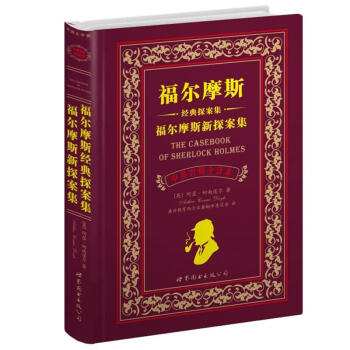

![開明第一英文讀本 [Kaiming First English Book] pdf epub mobi 電子書 下載](https://pic.tinynews.org/11395020/rBEhVFLciXoIAAAAAAyfJwYRT5oAAIEwAB5nu8ADJ8_260.jpg)


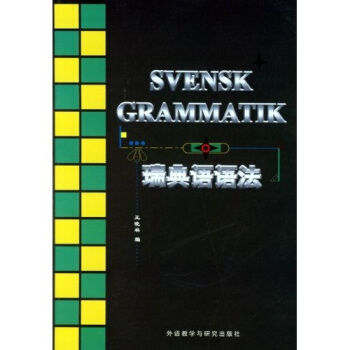







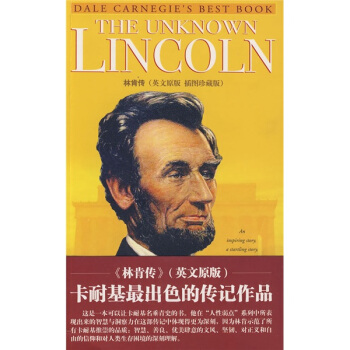
![E2兒童美語:中級(全套 修訂本 附DVD光盤) [7-10歲] pdf epub mobi 電子書 下載](https://pic.tinynews.org/10253900/ba78f638-bfa2-4c34-baee-776bef5095f9.jpg)
![雙語譯林:懺悔錄(附法文原版書1本) [Les Confessions] pdf epub mobi 電子書 下載](https://pic.tinynews.org/10862443/rBEHaFC1t-4IAAAAAAEZ9ESF56EAADDewCCKiUAARoM099.jpg)
